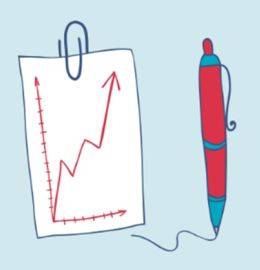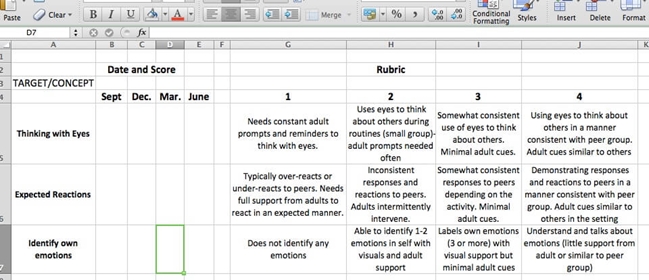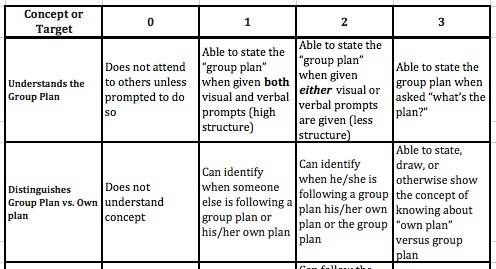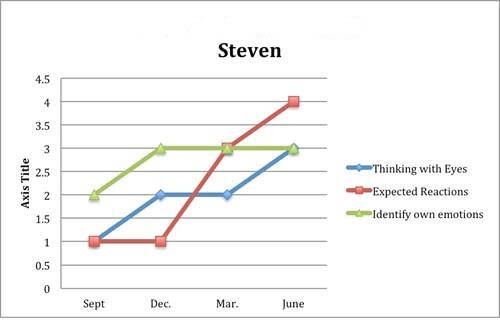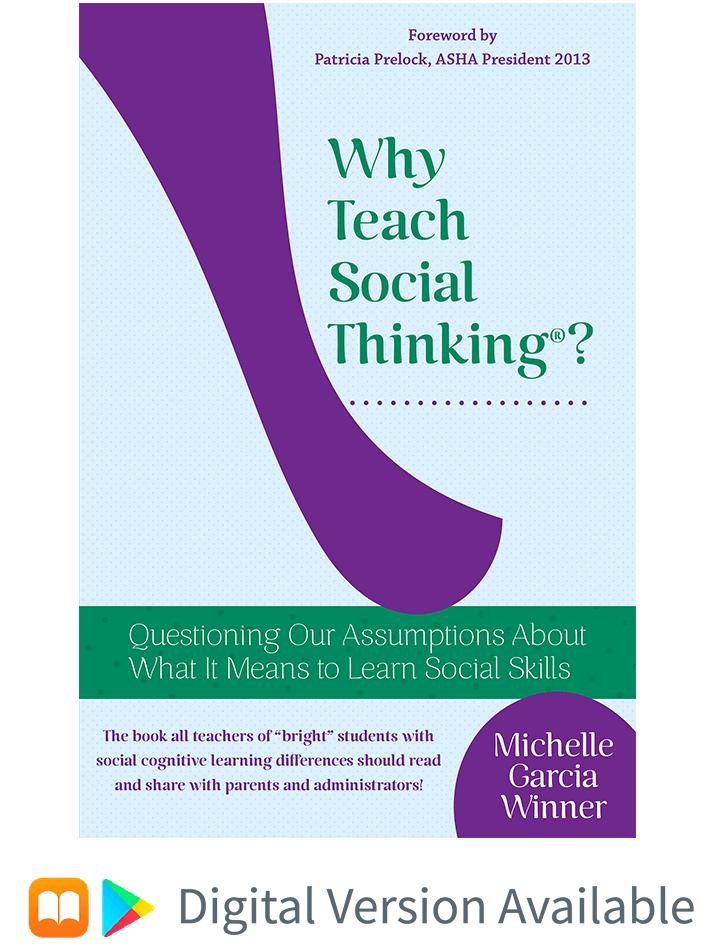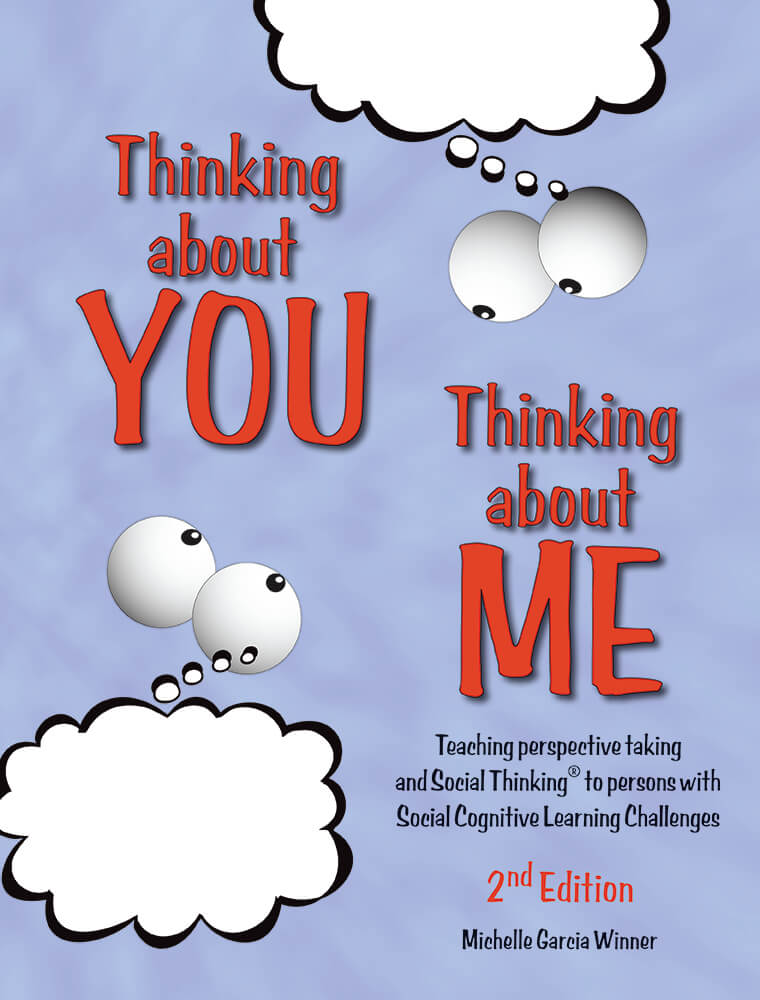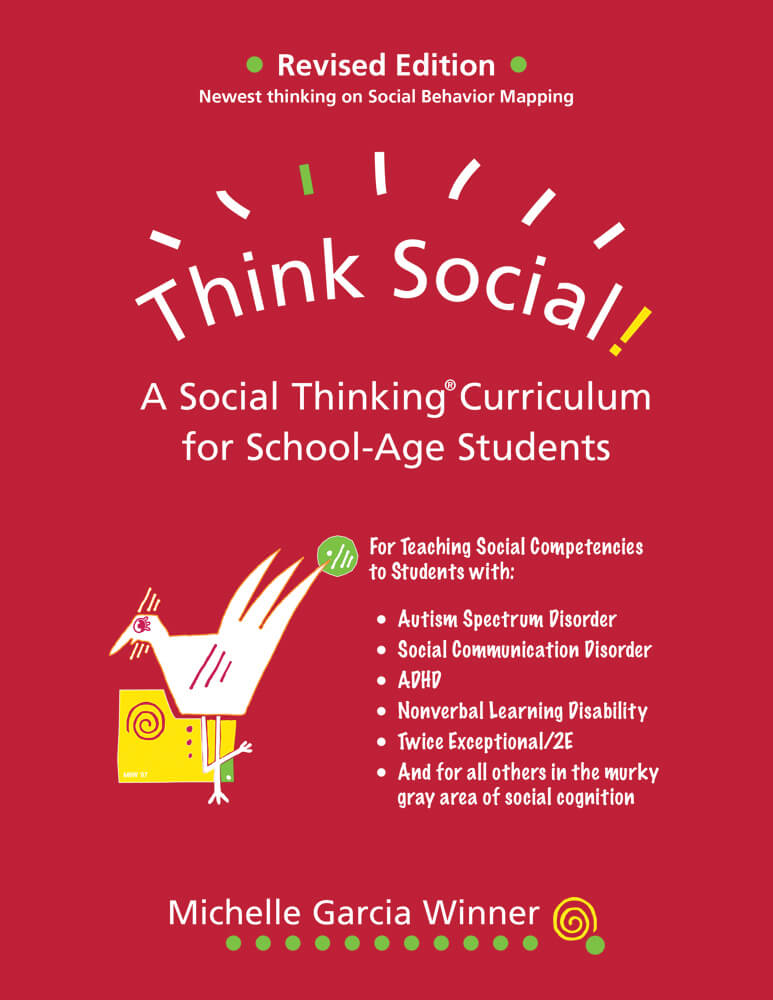© 2021 Think Social Publishing, Inc.
Whenever we talk about the complexities of data collection, questions arise such as: What do we do with insurance companies who only want to see numbers and scores? How do we work within our school district's policy for showing data? How do we write goals and objectives that comply with the academic standards, but still reflect the social learning needs of the student?
One possible way to tackle all of these very real challenges is to include rubrics in your goals and data collection. We've been using rubrics in our clinics for a number of years and share some of these tools in our workshops. But, for those of you who just want a snapshot, here is a short tutorial on using rubrics, with screenshots to help.
What is a rubric and why do we use them?
In a nutshell, a rubric is a way to define expectations for a student in a way that makes sense to everyone involved. They are popular tools for teachers and students because they do more than just state an expectation. Rubrics list criteria (what counts) and incorporate levels of quality rather than a single performance objective. What’s most appealing to us is, unlike traditional ways to measure IEPs; rubrics provide descriptions of the expectations as well as number or value to measure those expectations.
Rubrics are often referred to as a more "authentic" way to measure social learning. But it's a bit of a paradigm shift for many of us who were traditionally trained to write goals and objectives using X% accuracy or X out of X attempts. Yet, it’s worth the time and effort in learning to use them. Scoring rubrics expand our vision of a student’s progress over time and allow us to react as needed to modify our teaching to better help our students learn. Another reason we like rubrics over traditional IEP goal statements is the conversation involved, among educators and our students. Explaining the rubric criteria and rating levels and giving examples that illustrate the concept being measured can prompt teaching and learning about the social concepts outside the actual lesson. Everyone benefits!
Integrating rubrics into goals that comply with academic standards
The ability to think socially is embedded in many of the Common Core and State Standards upon which our public education curriculum is based, even in more concrete subjects like math and science. So we need to be able to write goals and objectives that include the rubric as the unit of measure that also comply with academic standards. We start with thinking – literally! Social Thinking is unique in that we first teach students to develop awareness of a concept before we expect the students to develop different social behavioral responses. So when writing rubrics start with thinking goals, then write behavior goals.
Below are two examples of how we write goals with rubrics to help students learn about these concepts. Rubrics use different levels of evaluation which work so well in helping us assess our students’ social thinking. Social behavioral goals could then be written to follow.
Speaking and listening - 4th grade Standard
Engage effectively in a range of collaborative discussions (1:1, in groups and teacher led) with diverse partners on grade 4 topics. Follow agreed rules for discussions and carry out assigned roles.
Goal Idea: By June 2022, Steven will increase understanding of the social context and related social rules needed to participate in activities and discussions in small groups in the following two areas, as measured by a score of 3 or higher on the attached rubric:
- Using eyes to discover clues in contexts (reading the plan)
- Imagining and stating different roles of participants
The next step would be to write a goal and related rubric on increasing his use of social behaviors to participate effectively in discussions based on what he knows about the social context.
Writing - Kindergarten Standard
Narrate a single event or several loosely linked events, tell about the events in the order in which they occurred, and provide a reaction to what happened.
Goal Idea: By June 2022, Ashley will achieve a score of 3 on the attached rubric for narrating different aspects of a personal event that will include a step-by-step description of the link between actions and reactions as explored by introducing the Social Behavior Mapping framework.
1a) Actions of self and others
1b) Thought and emotions connected to the actions
1c) Reactions of self and others (consequences)
1d) Resulting emotion of self/others
How to Develop Rubrics for Social Thinking Goals/Objectives
There are literally hundreds of rubric templates or rubric makers online these days (see sources at the end of this article). But we like using Excel because it's relatively easy, bundled on both PC and Mac computers, found in most schools and has the ability to generate graphs with the click of a button. Here's a step-by-step process for making your own rubrics.
1. Open Excel and type in the column headings as you see listed below (date and score, rubric, target/concept, and rubric numbers). In the first column, enter the concepts you are targeting (e.g., thinking with eyes, expected reaction, reading the plan, etc.).
|
|
2. Next, build the content of your rubric by writing a short description under each number in the rubric columns. Start with the MINIMUM you would expect in rubric level 1 (e.g., needs constant adult prompts) and then move to level 4 which should represent the level of understanding or skill typical of the peer group OR where you would like the student to progress at the end of the year.
|
|
3. Add other targets or concepts and fill in the rest of the rubric definitions.
|
|
4. Once you have the rubric definitions, you can print the rubric and ask teachers, SLPs, classroom aides, etc. to simply circle the definition that best describes the student(s) in whatever situation you are measuring. See the example below of a rubric designed for preschool/early learners. This will literally take the teacher or aide or other professional two to three minutes per student to complete.
Name _____________________ Date ___________________
Observation context or situation (e.g. circle time, playground, centers)________________
|
|
If you are the person responsible for scoring the student then you can enter the scores on the Excel spreadsheet for each student during each quarter. Excel can hold an infinite number of students over several years. To make a chart in Excel for the IEP meeting, end of year report or parent conference, simply drag your cursor to select the targets and scored area (see green highlighted area below) and then select the CHART tab and click on the LINE button and then select the stacked marked line (or any of the lines).
|
|
This will produce a chart that summarizes the data you've collected over the course of the school year (see below). You can design your rubric to be a daily, weekly, quarterly or pre/post tool. Attach this to the IEP and you have "authentic" data to show progress over time related directly to targets related to Social Thinking.
|
|
For those who want to use rubric templates instead, here are some resources.
http://www.rcampus.com/indexrubric.cfm
http://rubistar.4teachers.org/
http://www.assessmentfocus.com/rubrics-rubric-makers.php
http://www.teach-nology.com/web_tools/rubrics/languagearts/
We will continue to develop these and other tools to share with our community, but also want to encourage school teams and others to begin putting together "rubric banks" that can be edited for individual students and shared with each other.
Feel free to share this article in its entirety via print or email. Adaptations require permission of publisher; send requests to info@socialthinking.com









